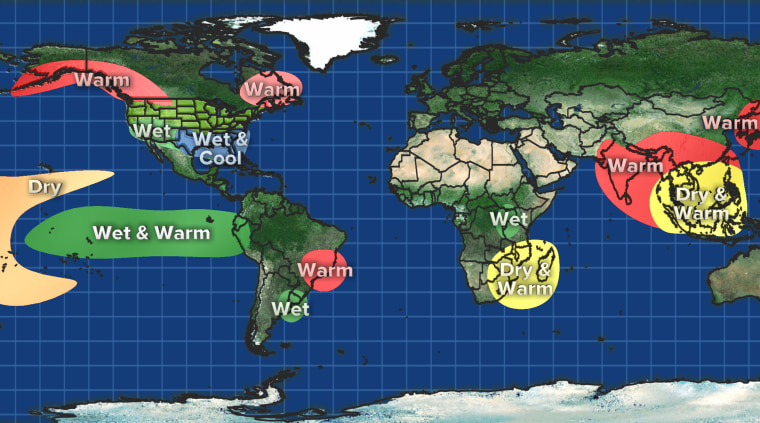The impacts of this season’s "El Niño" — now tied as the strongest on record — have been felt across the country in the form of record breaking warmth across the Midwest and Northeast, the deadly tornadoes and flooding in the Midwest and Southeast, and now the conveyor belt of storms slamming into southern California.
But the El Niño effect isn’t limited to the United States — it’s a worldwide phenomenon.
In South America, for example, heavy rains are to blame for some of the worst flooding in 50 years for parts of Paraguay, Argentina, Uruguay and Brazil.
And across the Atlantic, meteorologists in the United Kingdom have linked several strong winter storms to El Niño, including the destructive storms Desmond and Frank that caused catastrophic flooding and several deaths.
More than 100,000 fires burning in Indonesia are choking the population with a thick smoke. Ignited every year, the fires are a way to produce palm oil, but a crippling drought attributed to El Niño has stricken the region.

Ethiopia is experiencing its worst drought in decades, triggering the World Health Organization to deploy an emergency response team to help the country cope with the dire conditions. The government there says more than 10.1 million people, including 5.75 million children, are at risk for a famine if the weather pattern doesn’t change.
“The El Niño weather system could leave tens of millions of people facing hunger, water shortages and disease next year if early action isn't taken to prepare vulnerable people from its effects," the humanitarian relief agency Oxfam said in a release.
Related: Sick of El Niño? Worst Yet to Come, NASA Warns
This El Niño is forecast to maintain its strength throughout the winter and begin weakening in the spring.
El Niño occurs when winds in the Pacific weaken or reverse direction, resulting in a warming of the ocean in the central and eastern Pacific, mainly along the Equator. Clouds and storms follow the warm water, altering jet stream paths around the world.